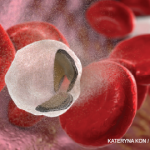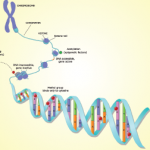Even among those individuals who are homozygous for the HFE gene, less than one-third of men and only about 2% of women ever develop the disease.4 The HFE mutation may have provided an adaptive process to mitigate the decreased dietary iron concentration in cereal grain–based Neolithic diets. In fact, the C282Y mutation is estimated to have appeared at the beginning of the first millennia A.D., corresponding to the Roman warm period, when the northern European temperature was higher than any recorded in modern times. All of this is to say that our genes have interesting ways of interacting with their environment. So maybe Lamarck was correct?
Who Was Lamarck?
Jean-Baptiste Pierre Antoine de Monet, Chevalier de Lamarck, aka Lamarck, was an 18th-century biologist, best known for his theory of inheritance of acquired characteristics. He proposed that a complex alchemical force drove organisms up a ladder of complexity, while a second environmental force adapted them to local environments through the use and disuse of characteristics, differentiating them from other organisms. You may recall the classic example taught to high school biology students as a way to explain the concept of use and disuse; the elongated neck of the giraffe. According to Lamarck’s theory, over a lifetime of straining to reach high branches, a giraffe could develop an elongated neck. But Lamarck could not explain how this might happen, though he discussed nature’s “natural tendency toward perfection.” Though historians credit Lamarck with developing one of the first, though flawed, theories of evolution, he died in poverty and obscurity. Although his theories have been debunked, he definitely was onto something. That something became known as the field of epigenetics, the gatekeeper of the genome.
Recent research suggests that the environment can make lasting changes to the genome via epigenetic mechanisms—changes that may be passed on to future generations.
Epigenetics: A New Frontier
Recent research suggests that the environment can make lasting changes to the genome via epigenetic mechanisms—changes that may be passed on to future generations.5 Epigenetic changes can range from chemical modifications of histone proteins—such as acetylation and methylation—to modifications made to the DNA itself. Such changes usually cause chromatin compaction, which limits the ability of the RNA polymerase II transcription complex to access DNA, ultimately resulting in reduced messenger RNA (mRNA) and protein output. Basically, epigenetics can define which genes may be silenced in order to enhance protein synthesis or eliminate redundancy. It cannot change the DNA, but can modify its reading.



